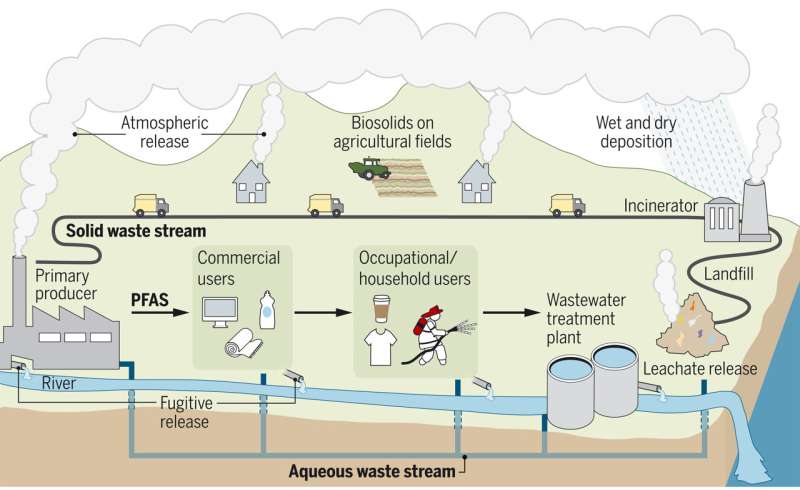February 4, 2022 report
A review of research looking into the impact of PFAS-containing products on the environment

A team of researchers at the U.S. Environmental Protection Agency (EPA), working with colleagues from the Institute of Environmental Engineering, ETH and North Carolina State University has conducted a review of the research done on per- and polyfluoroalkyl substance (PFAS)-containing products and has found that very little is known about their impact on either the environment or human health. They have published a Review piece in the journal Science outlining their work, their findings and what they believe needs to happen regarding the use of the chemicals in products moving forward.
Chemists discovered the benefits of PFAS over 70 years ago, including their ability to repel both water and oil. They have been used in a very wide variety of products, from lining fast food containers, to jet engine blades to fire retardants and stain proofing products for textiles. Unfortunately, one of the main factors that makes them so useful is the same one that makes them so troublesome—their ability to last a long time. For this reason, they have been labeled as "forever chemicals." No one really knows how long they persist in the environment, but research has suggested it could be thousands of years. In this new effort, the authors wondered how much research has been done regarding PFASs and what might have been learned about them. To find out, they conducted an extensive review of published literature. Their main finding was that thus far, little is known about them.
The researchers found that there are over 8,000 PFASs either in use or in previous use. But they also found that little to no work has been done to find out which products have them. Likewise, little research has been done to find out what sort of impact they might be having on the environment or on the human body if they are consumed. They also found out that much research has been conducted on a few PFASs, typically those that were found to cause health problems or birth defects. But they also found that when the chemicals are replaced, little work has been done to find out if they are simply different kinds of PFASs and whether they are safer.
The researchers suggest that the scientific community needs to take a closer look at PFASs to see if there might be alternatives to them and to find out as soon as possible if there are ways to mitigate the likely harm from those that have already been released into the environment.
More information: Marina G. Evich et al, Per- and polyfluoroalkyl substances in the environment, Science (2022). DOI: 10.1126/science.abg9065
Journal information: Science
© 2022 Science X Network




















